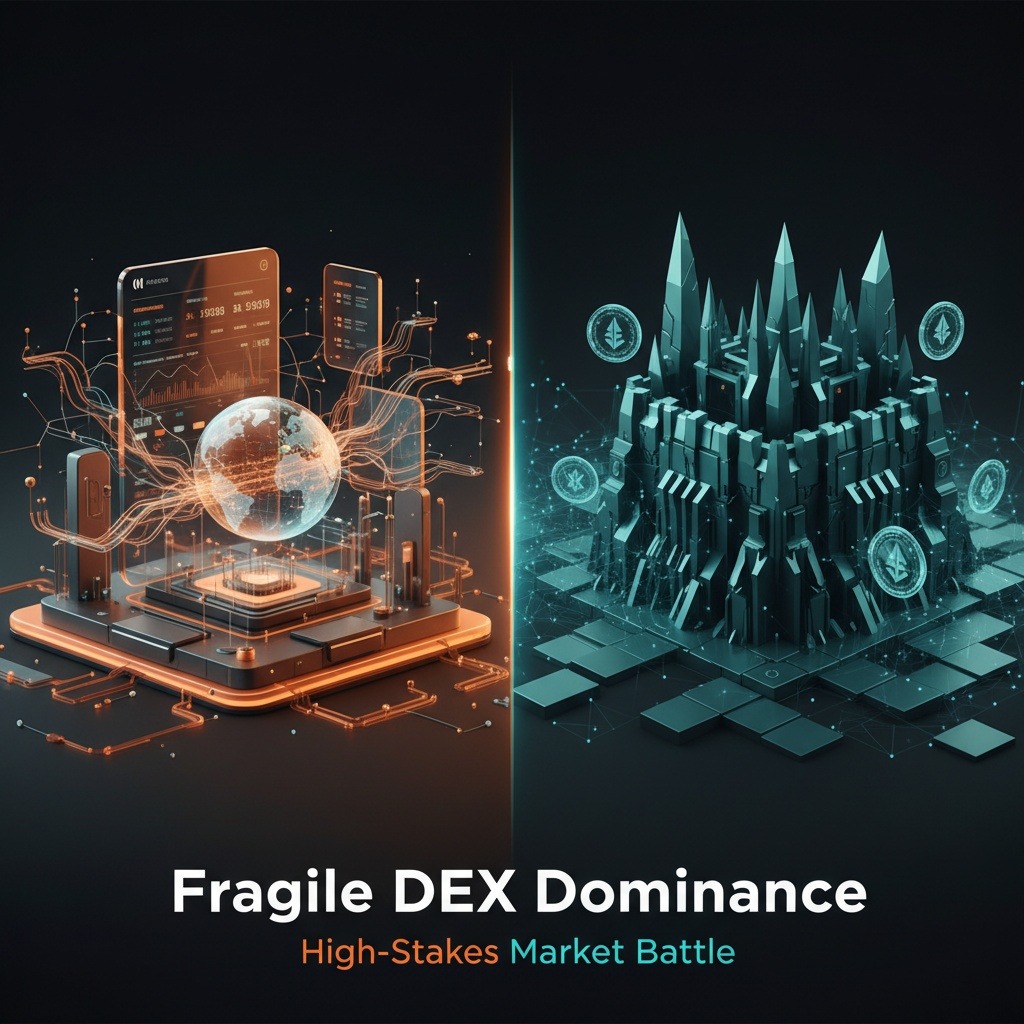SINGAPORE — As the annual Token2049 conference wraps up, the landscape of decentralized exchanges (DEXs) is evolving rapidly, with platforms like Aster and Hyperliquid vying for dominance. However, Stephan Lutz, CEO of BitMEX, warns that the current fervor surrounding these new entrants may be fleeting due to the fragile nature of their incentive-driven models.
Recent weeks have seen Aster outperform Hyperliquid in 24-hour trading volume, igniting fierce competition among DEXs looking to capture expanding market share. This competitive environment has encouraged announcements of new exchanges, including Justin Sun’s recent DEX launch at Token2049.
Despite the current excitement, Lutz describes the operational structure of DEXs as inherently unstable and akin to “pump-and-dump schemes,” though he clarifies this characterization is not meant to imply fraudulent activity. “DEXs facilitate market access without intermediaries and rely significantly on incentives to generate momentum,” he explained. “It’s an advertising strategy, where platforms attract users with token rewards and fee rebates, creating a feedback loop that drives trading activity.”
Lutz expresses skepticism regarding the longevity of these DEXs, noting that the rapid cycles of volatility and the incentives they offer may hinder their ability to maintain liquidity in the long term. Retail traders, often in pursuit of high yields, may find themselves facing significant risk due to this volatile environment.
Contrasting the unstable DeFi landscape, Lutz highlights that centralized exchanges like Coinbase are well-equipped to weather market fluctuations and maintain dominance as the DEX hype wanes. He emphasized, “Institutions cannot interact with DeFi in the same way as with centralized exchanges, where they typically find stability and reliability.”
In tandem with developing the DEX realm, BitMEX has made strategic moves of its own, particularly with its data infrastructure relocation to Tokyo from Dublin. Lutz pointed out that Japan has become a key hub for trading volume, making the switch a strategic decision aimed at enhancing liquidity. The results have been promising, with BitMEX reporting liquidity improvements of approximately 80% in primary contracts and up to 400% in certain altcoin markets since the relocation.
Lutz also discussed his perspective on the next phase of the cryptocurrency market cycle. He believes that increased institutional engagement will lead to Bitcoin (BTC) exhibiting behavior more consistent with traditional assets, reflecting a steadying of the extreme volatility that has characterized past market cycles. “With wider adoption, I anticipate longer plateau phases, while still maintaining the traditional market dynamics,” he noted.
The introduction of spot exchange-traded funds (ETFs) in the U.S. last year has already begun to temper Bitcoin market volatility, evolving BTC’s implied volatility indices into patterns more akin to traditional asset classes. As the DEX sector faces uncertainty, Lutz suggests that Bitcoin will start resembling a more stable asset, experiencing gradual changes rather than the erratic surges and drops of the past.
In a market landscape filled with rapid changes and transient trends, Lutz’s insights underscore the need for both users and investors to navigate the evolving dynamics of decentralized exchanges with caution as they look towards the future.



